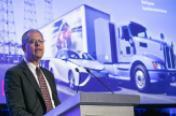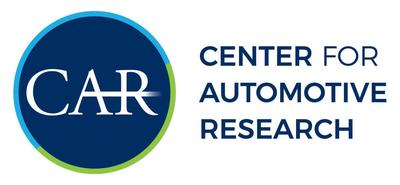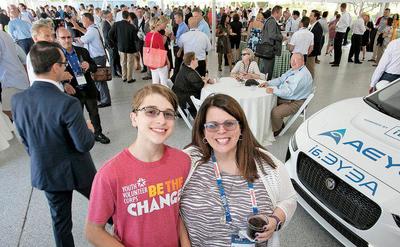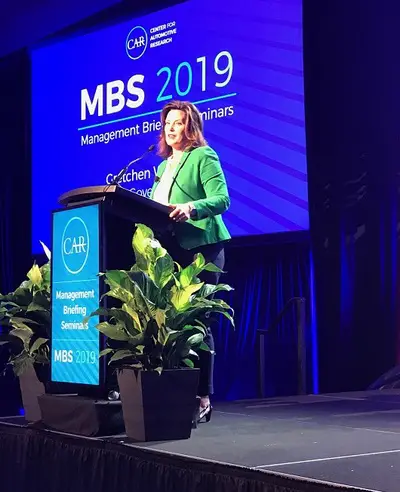CAR-Management Briefing Seminars 2019 - Exploring the Edges of the Envelope for the Auto Industry
By Steve Purdy
Senior Detroit Editor
The Auto Channel
August 8, 2019 – Traverse City, MI; What a lovely commute to work I have this week – about three miles along the shore of East Traverse Bay in Northern Michigan. At 7:15 I share the road with just a few other vehicles as the sun slowly rises above the lush hills to the east.
The Center for Automotive Research in Ann Arbor hosts an important conference in Michigan’s pristine north country each August where we come to explore the edges of the auto industry envelope and beyond. The CAR Management Briefing Seminars are the place to be for OEM execs and top-level staff along with movers and shakers from suppliers, government, finance, business units, plus the analysts and media who cover it all.
Some of us have covered the MBS for decades. It’s been going on now for 54 years. The edges of the above-referenced envelope flow like the northern lights. Who remembers the dismal days of “badge engineering” and government-mandated emissions systems that spoiled fuel mileage and performance, and the scary time when GM and Chrysler faced imminent bankruptcy? Crises and trends come and go but now, in 2019, we’re wrapping our minds around powertrain electrification, cyber security, autonomous vehicles, and the infrastructure for all these as well as disorienting international trade issues.
Our lunch on day one included a panel discussion of automotive cost prediction. The wide-ranging, esoteric conversation among the finance guys on stage would cure insomnia for those uninterested in the topic, but I paid attention. Part of the discussion included challenges to cost prediction related to the exponential increase in the use of “cobots,” a term I had to look up. It refers to a “collaborative robot,” that is, one that physically interacts with humans in a shared workspace as opposed to a regular robot designed to act autonomously or with limited guidance. Auto suppliers have had to hone their cost efficiency at all levels to keep up with tough and intense competition and cobots are part of that.
Punditry is an important commodity at MBS, though it often seems the experts feed off one another. We’ve been hearing concerns about a softening automobile market and with a modest downturn in 2021 and 2022. With most of the developed world constituting mature automobile markets, manufacturers will have to rely on emerging markets for any significant growth. Fluid government policies affect individual markets around the world and the difficulties anticipating these policies add another measure of uncertainty. Jeff Schuster, president of global forecasting at LMC Automotive, notes that despite markets like Russia, Brazil, Turkey, China and others being “highly volatile” they are expected to “drive growth globally” in the near future.
Among the most frequent and important discussions this week at the MBS are about where we are headed in the development of autonomous vehicles. Of course, we’re already allowing our cars a small measure of that with adaptive cruise control, automatic emergency braking and other technologies, but the end game in the sights of many include vehicles so autonomous that they allow for no driver at all. Some of those vehicles are already in use, though very limited and experimental. It is easy to see a role for people movers in controlled urban spaces and a lot of companies are putting a lot of resources into that R&D.
 |
We learned, for example, that the USPS is even running self-driving 18-wheelers hauling mail between Phoenix and Dallas in a research and demonstration project guided by a company called TuSimple who are laying the groundwork for long-haul autonomous trucking.
ZF safety guy, Farid Khairallah, told an audience here at MBS that the cost of fully autonomous vehicles may end up being unrealistic and that the much-less-capable “Level 2” (driver behind the wheel of a vehicle that steers, stops and adjusts speed by itself) autonomy may be way more achievable for automakers. Level 5, (fully autonomous without any human input) will require 1 million times more computer input to be safe. That’s why, he notes, we see so many partnerships and collaborations: because no one has the resources to do it alone.
It’s not all nose-to-the-grindstone here in Traverse City. Conferees, their families and even the humble, hard-working journalists get time to relax and play. One of our favorite events for the past many years is hosted by The Millerschin Group, a PR agency with tier-one supplier clients. It is a sunset three-mast schooner cruise on West Traverse Bay - a couple hours on a big wooden boat with huge sails and wonderful food.
Speaking of punditry, we heard a discussion of powertrain electrification that included more common sense than usual. The speaker talked about observing a surprising number of electric cars on the California freeways indicating market acceptance may be stronger than expected. On the other hand, what’s right for urban areas will not be right for those outside the cities. The internal combustion engine will continue to be relevant to a substantial segment of the market while OEMs and tier-ones spend most of their R&D dollars on electrification. So, she says, let’s not put all our eggs in one basket.
Powertrain electrification, substantially driven by government regulations around the world, is expected to prolificate exponentially to nearly 50% by 2030. We’re still hearing that a breakthrough in battery technology is near; something we’ve been hearing for about a decade now. US DOT expert, Michael Berube, agrees that innovations bringing costs to a competitive level with gasoline or diesel powertrains are coming but not right away. In the meantime, automakers and suppliers are putting most of their powertrain development dollars into a variety of hybrids and battery electrics and they’re losing a significant amount of money on every one they sell now.
Plug-in hybrids and battery electric vehicles, of course, need a charging infrastructure that barely exists today. Deep-pockets GM doesn’t want to put their money into it so they’re seeking investors in an charging infrastructure partnership.
Another big topic here is that of cyber-security. Some MIT brainiacs proved some time ago they could sit in their lab and take over control of an SUV in another part of the country. Since then the industry has had plenty of reminders, often damaging ones, that they need to pay attention to how vehicles and control systems are connected to the internet and how a miscreant with malicious intent can hack in. The people who do that kind of work – software engineers – are scarce. So, if you’re advising a youngster with techie talents you might want to recommend this field.
As is the custom at MBS, Michigan’s governor comes to do a bit of cheerleading and courting this occasionally adversarial audience. Our new governor, Gretchen Whitmer, a democrat, ran on a platform of infrastructure repair and development – “Fix the damn roads!” she lamented. She has proposed in her new budget a huge gas tax increase to generate about $2.5 billion/year to do that. So far the republicans in the legislature have balked and failed to pass the budget by the artificial deadline of before summer recess. She also expanded her infrastructure definition will beyond the roads.
The governor’s economic development people are hard at work selling the state’s advantages to anyone willing to invest here. We’re at the apex here in Michigan of a cycle that has repeated itself regularly since I’ve been paying attention, that is the wringing of hands when times are bad lamenting our dependence on the auto industry, contrasted by the good times when we take full advantage of our automotive chops when recruiting business. Workforce development, tariffs, and a new partnership with a drone-based R&D company were also on her agenda.
Trade policies around the world threaten to disrupt the industry even more. A hard Brexit could put the European markets at risk of serious problems that will ripple throughout the industry. US tariffs against Chinese products could seriously limit the U.S. automakers’ access to the fastest growing auto market in the world. Trade agreements around the world are need to provide some measure of the predictability that businesses need to develop plans.
We take for granted that autonomous vehicles will be safer than those driven by error-prone humans. But, is that supported by data or is it just a hypothesis? A patent application has been filed by patient advocate, Amitai Bin-Nun for a system to answer that question using the streams of data already being generated by today’s vehicles, but it will be years before enough autonomous vehicle data is collected in order to prove the hypothesis.
So, the summary of this year’s CAR MBS is not much different than that of the past nearly two decades I’ve covered the conference, that is, changes and disruptions in the auto industry continue to come at an ever increasing pace. And, it is reasonably certain that we’ll be talking about topics in five years that are not even on our radar screen today.
Good luck to us all!
© Steve Purdy, Shunpiker Productions, All Rights Reserved






